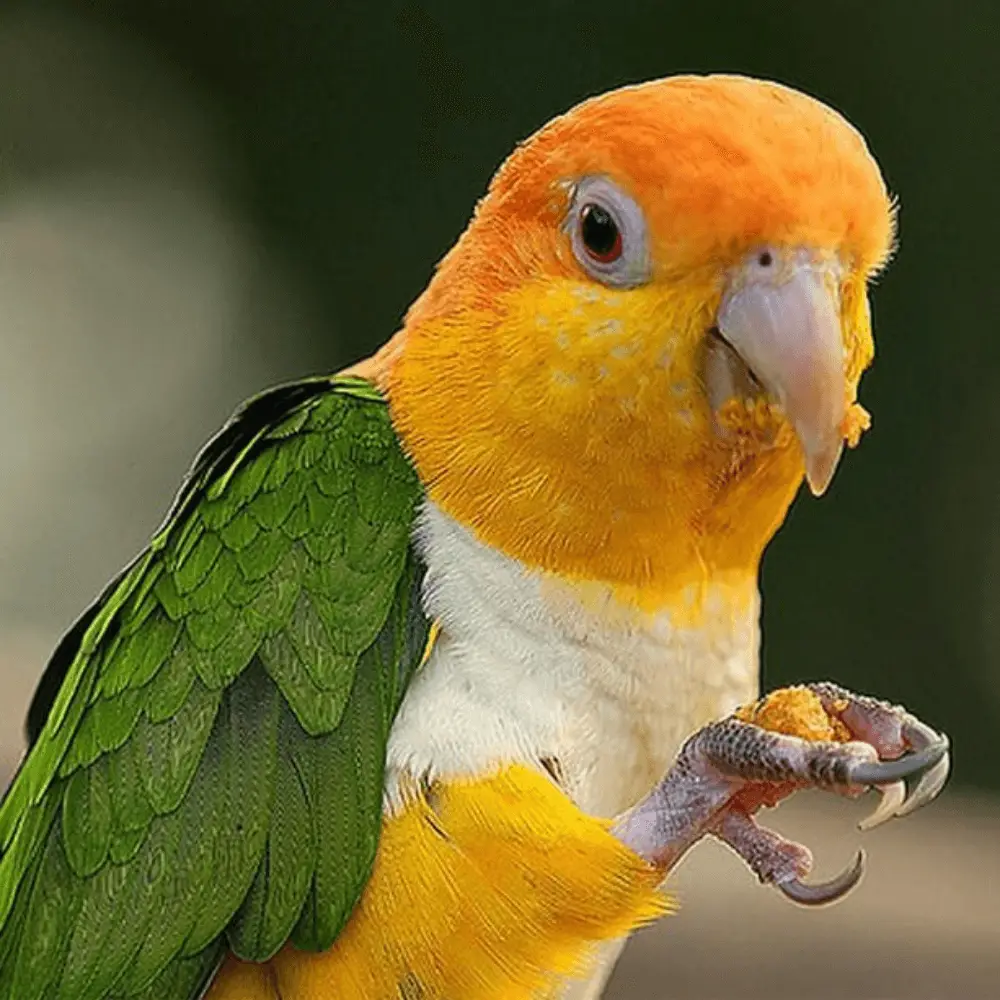White-bellied caique is very communicative. They utter a variable mix of notes that include harsh screeches, musical and fluty whistles, and piercing calls, all quite similar to those of the may rot caique (Pionites melanocephala).
Caique parrot Habitat
White-bellied Caiques live mainly in lowland rainforests, whether or not they are flooded, although they show a slight preference for woodlands that are regularly flooded.
In the south of their range, they are also found, though more rarely, in dry forests. The white-bellied caïques particularly appreciate the edges close to the rivers and the clearings where a few scattered trees remain.
They do not disdain to regenerate wooded areas in which a few large trees emerge.
Distribution
This species caique is endemic to central South America. Its area of distribution covers the southern bank of the Amazon in Brazil, but also the north of Bolivia and the extreme southeast of Peru.
Three subspecies are officially recognized: PL leucogaster, the nominate race (south of the Amazon River, Maranhao and eastern Para to the north of Mato Gasso and to the lower Rio Madeira) – PL xanthurus ( Western Amazon, from the Rio Madeira basin westerly to the Rio Jurua) – PL xanthomeria (Western Amazon, eastern Peru and northern Bolivia).
White bellied caique for adoption
SOURCE: African Grey Parrot Pet
White-bellied caique behavior
The white-bellied caiques have habits quite similar to those of the may rot caiques. They are sedentary birds, noisy, and quite easy to observe.
They usually live in pairs, small family groups, or small bands that can often be heard as they move from one part of the forest to another.
They usually stay in the foliage at the top of the trees and they burst out with a loud screech when disturbed.
Presumably, like their close cousins in the northern Amazon, they set up a system of one or two lookouts to raise the alarm in case of danger when the group is eating wings.
White bellied caique diet

Unlike the caique parrot maipourri which resides north of the Amazon, we have little information on its specific diet.
The only thing we know for sure is that the white-bellied caique is mostly vegetarian. It consumes fruits, berries, seeds, and presumably some insects.
Assuming that its diet is similar to that of its close relative, it also ingests flowers.
Reproduction nesting
Given the low accessibility of their breeding grounds, there is little information from the natural environment.
In the eastern part of their range, white-bellied caiques nest in January. They set up their nest in a tree cavity, about 30 meters above the ground.
The female probably lays between 2 and 4 eggs there. She broods alone while the male takes care of the supply.
The young are altricial and do not leave the cavity before 12 or 14 weeks. Thanks to an observation made in captivity, we know that the incubation period is about 26 days.
Threats – protection
Although its habitat is suffering serious damage, the species is not globally threatened. In eastern Peru, it is even considered quite abundant.
On the other hand, in Santa Cruz, in northern Bolivia, the breed may be extinct. The capture and marketing of this bird, which had had some success in the years 1980-1983, is now practically nil.
White bellied caique price
The species is not threatened. It is occasionally found in pet shops and breeding parrot, but its price remains quite high. The maximum price found in stores is 1350$

